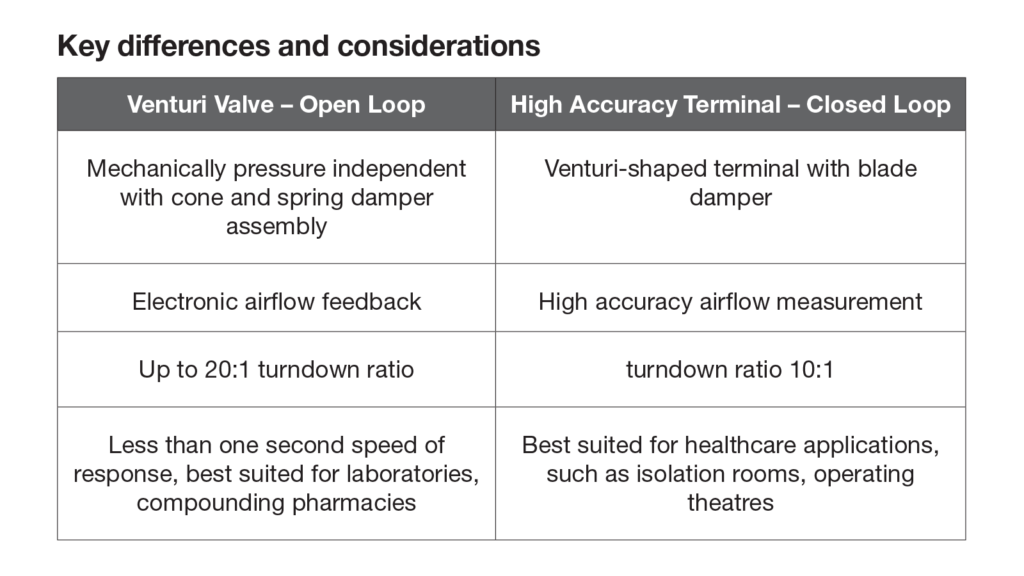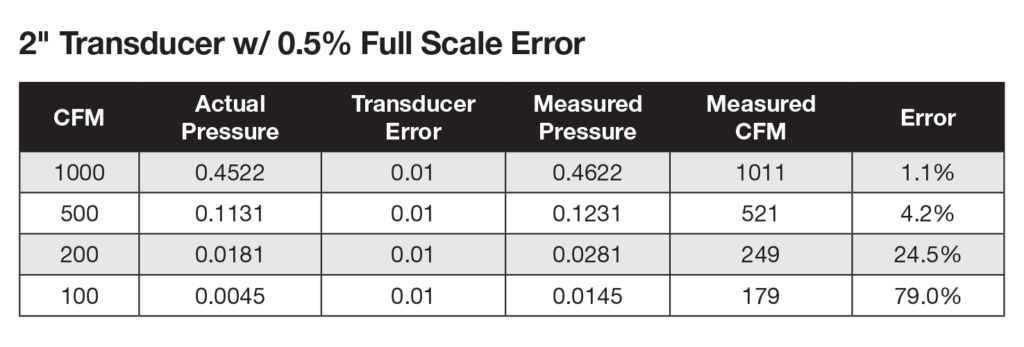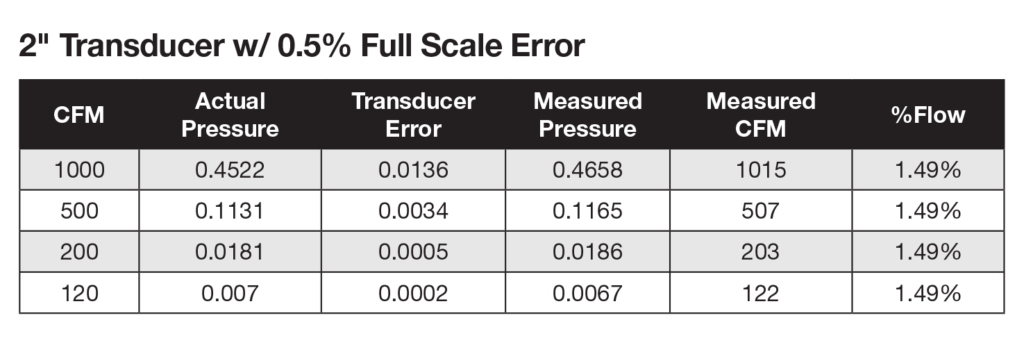Using the wrong air valve technology in operating theatres and isolation rooms can not only negatively affect the performance of the space but potentially render the entire air management system unstable, says Syed Taqi Hussain
Using the wrong air valve technology in your critical space – be it in an operating theatre, laboratory, isolation room or compounding pharmacy – can not only negatively affect the performance of the space but potentially render the entire air management system unstable. This article explores some of the key elements to consider when selecting your equipment, ensuring you are able to avoid some of the more common pitfalls.
OPEN LOOP VERSUS CLOSED LOOP
An open loop control does not have a direct feedback link from the control variable to the controller. An example of this is the use of a supply air temperature sensor to regulate the volume of cold water passing through a water coil in an air handler operating in cooling mode. Here, the designer is using an anticipated relationship between interior losses and the volume of supply air to regulate the amount of cooling required to maintain the space air temperature. The volume of cold water has no direct feedback to the control parameter (space temperature), and therefore, it is an ‘open loop’.
A closed loop control, on the other hand, senses the controlled variable and uses that signal – sometimes referred to as feedback – to adjust the controlled device. As a result, closed loop controls are generally seen to provide a better level of control than an open loop control and are, therefore, more commonly used in HVAC control processes. Ultimately, it is the application and the design of the air-handling equipment that will determine which control loop is most suitable. Venturi Air Valves are mechanically pressure independent valves, providing electronic flow feedback. They commonly provide a 16:1 turndown ratio and do not require a straight duct for installation.

They have a spring and cone assembly and typically operate in both low- and medium-pressure ratings that allow them to work down to 0.3 in.w.c. or 0.6 in.w.c. of differential pressure, respectively. When using Venturi Valves, the design engineer is responsible for highlighting the model that has been selected.
Understanding the minimum operating pressure is critical – as this device is mechanically pressure independent, a minimum pressure of 75 pa (low pressure valves) or 150 pa (medium pressure valves) is required. Failing to ensure this will restrict the movement of the cone and spring, ultimately compromising the pressurisation polarity.
The pressure drop across the valve should also be measured and reported to the BMS – providing a pressure switch is not appropriate in a critical space. Feedback on current valve pressure can be valuable information for trouble shooting and facilities management and, as such, should be considered a standard offering on the Venturi Valve models. One of the technologies used in high-accuracy terminals is the vortex shedding sensor, which calculates air flow by measuring the pressure pulses or vortices formed on the leeward side of an obstruction in the air flow and calculating the air flow velocity, based on this.



Syed Taqi Hussain
The efficacy of these sensors becomes limited at a low flow – that is, at a velocity less than 450 FPM, when the vortex sensor turns off and stops communicating data. In contrast to other devices that continue to operate with reduced performance, the response time for a vortex shedder is typically slower than the velocity pressure.
These devices utilise differential static pressure measurements for measuring the air flow – a non-invasive flow technology with a typical turn down ratio of 10: 1. They do not require a straight duct and can, in fact, be installed at any orientation with the duct.
High-accuracy terminals utilising differential static pressure can vary in pressure drop, depending on the valve size and target airflow but, typically, have a minimum pressure drop of 0.01 in.w.c and a maximum pressure drop of 0.15- 0.20 in.w.c. In contrast to transducers, which are limited to using a ‘full scale error’ reading only (as seen in VAV boxes), high-accuracy terminals with a differential pressure measurement operate with transducers using a ‘percentage of error’ reading. This enables the pressurisation polarity to remain intact and uncompromised at minimum flows, as illustrated in the example, right.
OPTIMAL ROOM PRESSURE CONTROL STRATEGY
Airflow Offset Control is an open loop control, which maintains a constant CFM offset between supply and exhaust valves. Operating independently of room pressure, it is one of the most commonly used solutions. Pressure Control, meanwhile, is a closed loop control, which provides airflow adjustment based on room pressure. This is less commonly used, but often required for biosafety laboratories specifically, where the room is controlled to a constant pressure. However, it is important to note that this system should be used with caution, as it is less stable and introduces the risk of overshoot or undershoot.
Actuator speeds and response times are also an important consideration, with fume hood air valves typically operating with a response time of less than one second.
Actuator Speed: Standard speed (typically 90 secs) without VAV fume hoods and equipment exhaust.
Typical Applications: Healthcare facilities – operating rooms, isolation rooms, CSSD, ultrasound, MRI, CT Scan, endoscopy, emergency waiting rooms, pharmacies High speed (typically < 4 seconds) with VAV fume hoods.
Typical Applications: Laboratories, compounding pharmacies.
In conclusion, there are various technologies that can be deployed in your critical space, each with their own benefits and restrictions. A thorough understanding of these options and due consideration to your specific requirements are fundamental requirements to ensuring optimal performance and safety.
Syed Taqi Hussain is Sales Manager, (Antec), E.H. Price Middle East, where he specialises in critical space design and the selection of appropriate equipment. He may be contacted at syedh@priceindustries.com.
Copyright © 2006-2025 - CPI Industry. All rights reserved.